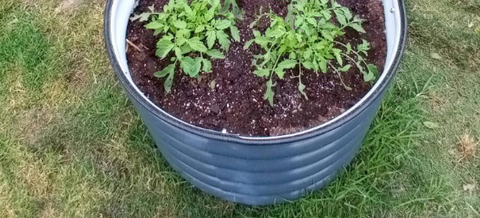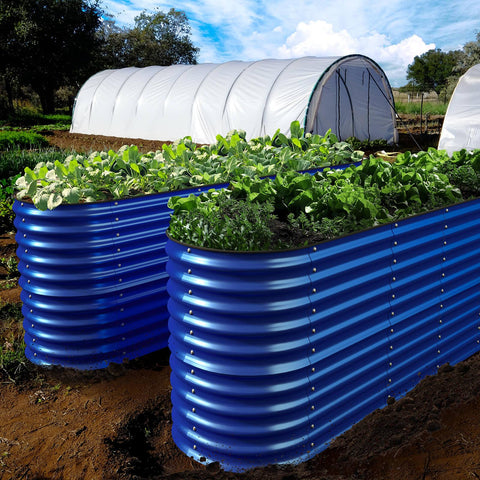Tips from Olle Garden Bed: 9 Smart Ways to Protect Plants in Winter
Winter is coming, so it's time to start thinking about how best to prepare your plants for the cold. Whether your outdoor plants are underground or in the garden beds, you can do something to help them survive until next spring.
Know your planting area
The conditions in your area can determine the survival of plants, so it is important to check the area where you live. This will help you determine whether your plant species can really survive the winter; You don't want your efforts to go to waste.
Of course, this is best done before you plant anything, but it can also help you determine which established plants can be preserved. Some plants are not hardy and need to be brought in to survive.
Make a note of your winter climate and learn how much cold your plants can withstand before being irreversibly damaged.

Cover
Whether you hate or like the appearance of the covering, it can actually become a very useful protective layer between plants and elements. The covering can act as an insulator to keep the root at a reasonable temperature throughout the winter. Different plants may benefit from different kinds of mulch, but the use of organic matter is a good starting point for winter mulch. Recently planted trees and shrubs require good layers, about 3 to 4 inches, to adequately protect against more severe winter conditions.
If you live in an area where winter thaws and freezes repeatedly, add more mulch.
If the cover is suitable for your atmosphere, you can keep the cover all year round or remove it when you come back in spring. Remember, in the end, you will have to add mulch.
Watering plants before frost
Do you know that wet soil keeps a warmer temperature than dry soil? Providing healthy drinks for your plants before the first frost is a good way to help isolate them.
Cold weather is easier to penetrate dry soil than wet soil, giving your plants a better chance of survival. So before the ground freezes, reward your plants for soaking well to protect their roots.
Filling soil cracks
If you find cracks around the bottom of trees or shrubs, fill them with soil. These cracks provide openings for frost to penetrate and kill the roots of plants. After the cracks are filled, you can water the plants as long as the ground is not frozen.
Pruning trees and shrubs
Ice and snow can damage the larger plants in the yard, even if they look solid. Proper pruning of trees and shrubs can ensure the strength and health of plants and help them resist cold conditions and the weight of snow and ice.
However, it is important to know which plants will benefit from autumn pruning and which will not. Ordinary abelia, sweet pepper, nine skin and cone hydrangea all benefit from the last pruning of this season. On the other hand, hydrangea mop, bay laurel and azalea are among the plants that will not benefit from end of season pruning.

Wrap your plants
Wrapping plants will protect them from cold air, sidewalk salt, and snow and ice.
Protect any low-lying plants you may have, which are at risk of being sprayed or splashed by sidewalk salt. You can build row covered tunnels or invest or DIY long-term solutions, such as cold racks. The cold frame is basically a mini house, and plants can be closed to protect them.
If you have young trees, you can wrap them together with burlap and hemp rope. Wrapping them together helps distribute the weight of new snow, limiting the chance of major damage. You can wrap the old trees alone or together, whatever is meaningful to your yard.
Stack them
The mound is usually related to roses, but it also applies to other woody plants. For this technique to work, you must build a mound around the bottom of the plant. For taller plants, it should be about 10 to 12 inches. The soil in the soil pile shall be well drained. The mound will help insulate the bottom of the plant and prevent large temperature fluctuations.
The best mound time is after the first freezing and after you finish the last round of trimming this year.
Move potted plants to the soil
This does not mean transplanting potted plants in winter. It just means putting the pot on the soil, not on a paved terrace. The soil can keep more heat than the road surface in winter, which can help to provide warmth for the roots of potted plants. If you want an extra layer of protection, you can also cover, stack, and wrap these plants.

Bring potted plants indoors
This is not a viable solution for every potted plant you have. However, if you have space in your home, it may only be suitable for smaller people. If you know that some plants, such as snakes, will not survive the winter, it is not a bad idea to let them live a comfortable and temperature controlled life in it for several months.
Protect your plants
It is important to protect plants in winter if you want them to thrive in spring. If you don't take care of this, your garden may be in a sad state next season. However, by practicing some of these techniques, it will pop up beautifully and you will be able to enjoy its charm and flavor.
